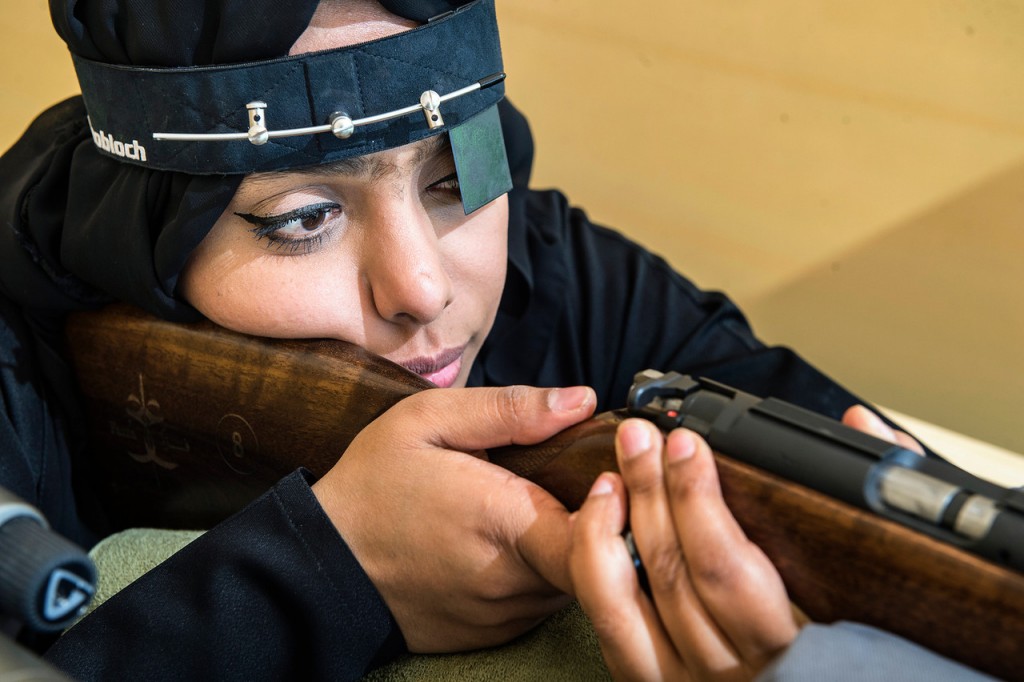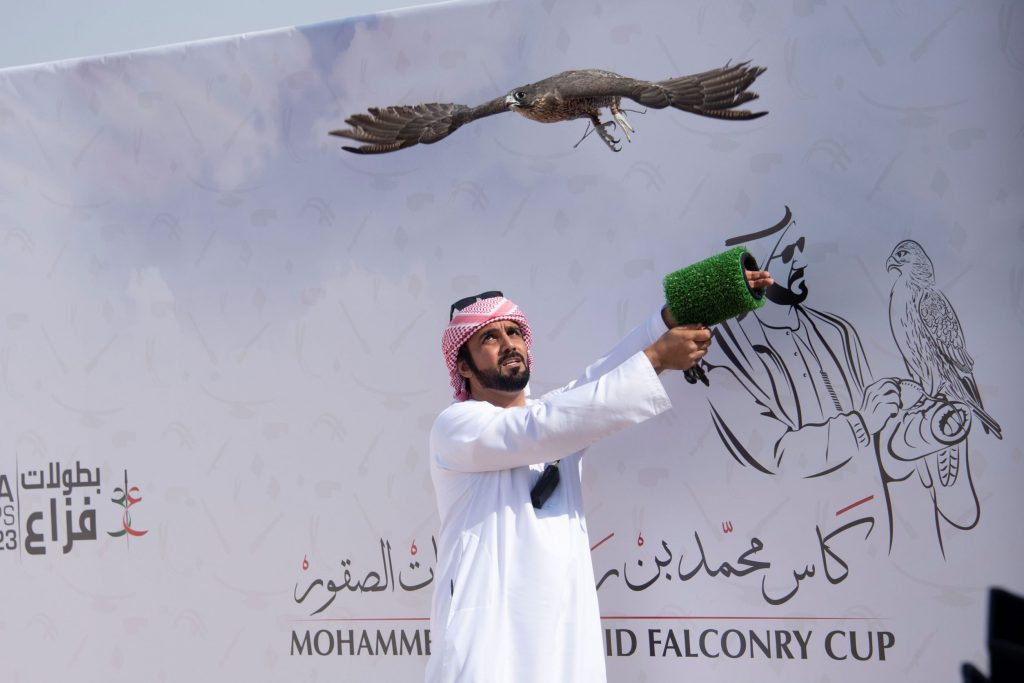DUBAI, 6th March 2017: Zayed University in Dubai organized the first edition of the UAE heritage research conference entitled ‘Current trends and Future prospects’. The conference, sponsored by the Hamdan bin Mohammed Heritage Centre (HHC) and media partners Al Oula Radio was held at the Zayed University Convention Center in Dubai, today, Monday 6th March 2017.
The conference which affirmed the continued pursuit of Zayed University to highlight the academic efforts and scientific research on the heritage of the UAE and HHC’s aim to harness all channels to activate the preservation of intangible cultural heritage and research related to it, was attended by students and researchers associated with the history and heritage of the UAE, while a large number of media were also in attendance.
Among the dignitaries who attended the conference were Major General Obaid Mohair Ben Surour, Deputy Director General of the General Directorate of Residency and Foreigners Affairs, Dr. Reyadh AlMehaideb, Vice President of Zayed University, and Rashid bin Markhan, Deputy CEO of HHC; Mohammed Abdullah bin Dalmook, Director of Corporate Support at HHC; Ibrahim Jumaa, Art Advisor at HHC, in addition to a number of officials from HHC.
The first part of the conference agenda contained speeches from dignitaries and researchers while the second part included four academic sessions for students of Zayed University.
Conference Agenda
The conference contained three main themes. The theoretical one which relates to efforts of scientific research on the subject of heritage globally and regionally. The practical aspect through case studies on heritage in the UAE. Thirdly, the future direction of development of scientific research in universities in the UAE.
Prof. Dr. Reyadh AlMehaideb, Vice President of Zayed University, making the opening address welcomed the attendees and praised the efforts of the College of Humanities and Social Sciences at the university for holding this conference which contributes to the achievement of many of the lofty goals to promote the history and heritage of the UAE through scientific research.
“Research is vital and fundamental for the success, progress and advancement of global societies. Scientific research is bringing about changes and discoveries and prospects for humans and contributing to progress and development. We are striving through the Hamdan bin Mohammed Heritage Center to carry out the vision of His Highness Sheikh Hamdan bin Mohammed bin Rashid bin Saeed Al Maktoum, Crown Prince of Dubai, to reiterate the importance of preserving our heritage and document if for the benefit of future generations who will look back with pride in the history of the country,” said Prof. Dr. Reyadh AlMehaideb.
The keynote speech of the Conference entitled ‘Understanding Emirati History’ was delivered by Prof. Dr. Frauke Heard-Bey, a historian and a scientist specializing in the affairs of political and social developments in the Gulf region for over five decades. This was followed by a lecture by the guest speaker Dr Eric Staples, Assistant Professor at Zayed University, Abu Dhabi, followed by the distribution of awards.
Award winners
The winners of the Undergraduate Student Research on UAE Heritage Competition, the annual competition which is officially sponsored by HHC for the second year, were then honoured.
The three winners were Alia Ibrahim Juma Alhaj Ibrahim Al Madani for her paper on ‘Unbreakable Ties With A Vibrant Art: The Ayyalah of UAE’; Banout Khalfan Al Ketbi (Emirati Literature: A mirror that reflects the rich cultural heritage of the UAE); and Abdulrahman Ali Sultan Bin Khalfoon Al’ali (Traditional Wooden Boats Building in United Arab Emirates: Dhow as an example).
‘Emirati Flashes’
The second issue of the annual magazine ‘Emirati Flashes’ which specializes in research, and is sponsored by HHC, was launched with a special edition commemorating the conference. The Committee of the Conference and a number of officials and professors were also honoured.
The second part of the conference included four academic sessions and discussion groups led by experts in the field of heritage and cultural research in four separate conference rooms by Mr. Omar Al Ka’abi, Ms. Maitha Za’abi, Mr. Abdulrahman Al Nuaimi and Dr. Timothy Power.
Keynote speech
Prof. Dr. Frauke Heard-Bey, who has been living in Abu Dhabi since 1967, in her keynote speech directed mainly at the students of Zayed University explained how any research about the UAE should begin by understanding the history and geography of the country.
“Everything has a past and therefore a history. Every person’s life is conditioned by his/her society’s history. Here we are concerned with the shared history of the people of the UAE,” she said while comparisons should be made with people of other nations or communities or their disciplines such as science, music, architecture, art, etc.
“Availability of water and other resources from the sea and the hinterland are key to understanding the geography of the UAE,” stressed Prof. Dr. Frauke who has published many articles in German, English and French languages over the past five decades.
“The map of the UAE shows that the modern towns are where the original settlements were: along the coasts, but not west of the island of Abu Dhabi or inland where there are oases in the vicinity of the mountains because the availability of water is the key for settling,” she said.
The Professor explained that to understand the history of Emiratis it is essential to know that society was and is organized on the basis of tribes that number around 125.
“There are some large tribal confederations which were concentrated in certain areas: Bani Yas in the west and south; Qawasim in the north and east; and on the fringes sometimes straddling neighboring countries such as Oman, Saudi Arabia, Qatar,” said Prof. Dr. Dr. Frauke whose most recent publication ‘Abu Dhabi, the United Arab Emirates and the Gulf Region: Fifty Years of Transofrmation’ was published in November 2016 in Berline by Gerlach Press.
“Leadership was never hereditary or tied to a code of succession – the most suitable for the job!” said the Prof. though it tended to be concentrated on one particular family.
“To understand the fabric of UAE society better, the Prof says stories carried down through generations are an authentic source for research.
“People remember good or interesting stories. Children in the UAE first understand from stories, that things happened to ‘grown-ups’, which appear to belong to an unfamiliar world. Thus, stories are the first step to recording history both orally or written,” she said.
“In the UAE, there have been and there are now Many different institutions and organisations, which collect oral history: In the seven emirates separately, in the National Archive, in the Heritage Centres, in the Universities, or in A Centre for Oral History run by Prof. Hassan Naboodah in the 1990s at UAE University,” she added.
However, she noted, compared to other regions, there is very little material which was written in the country but there are foreign archives from Lorimer (particularly useful for UAE history because data from around 1907) and other archives: Portuguese, Dutch, French, German, Vatican, Ottoman etc.
However, to get information on the UAE’s history since 1971 there are numerous sources such as newspapers, photos, films, exhibitions, museums, private collections (example stamp collections). “Modern written source can be anything any material in print or written by hand: Letters, newspapers, books, memoirs, diaries, administrative notes, books, articles, theses,” the Prof. said.
Maritime heritage
Guest speaker Dr. Eric Staples, Assistant Professor at Zayed University in Abu Dhabi, gave a lecture entitled ‘Experimenting with Maritime Heritage’.
He spoke at length about the importance of the maritime coastline and the sea as a source of living for pearl diving and trading and stressed on the need to research on boat-building methods and materials used in the past as compared to technological advances in the modern era.
“The sea forms the basis in the history of the United Arab Emirates for over several decades and centuries, and studies provide us with a lot of interesting things about the way of life here, which form the basis of country’s heritage. How people used to do fishing and diving for pearls. You must continue scientific research in this aspect in order to create more historical evidence because the deep sea is full of a lot of evidence of ancient history that can tell us about the past,” said Dr. Staples who has been acquainted with sailing boats since he was just six months old.
“The sea and is linked with human relationships though it has its dangers. But the sea has been taken for granted which is used for tourism, water sports and sunset cruises because it is very easy to forget that people in the past had to engage with the sea inspite of its hazardous environment,” he noted.
“Heritage is as much a modern construction as it is discussion of the past. Symbols of Emirati heritage is the desert, independent Bedouins, the camel and the falcon. The date palm, dhow, pearl, maritime heritage is just as essential as desert and oasis which combine to make a special blend of Emirati heritage,” said Dr. Staples who is an interdisciplinary historian focused on the maritime dimensions of the Islamic world.
He explained that the Gulf region was first to create a transport network through the sea that connected the maritime economy to the world.
“The current state of martime heritage in UAE is alive and very well. They have one of the traditional sailing programs in the world. There are heritage festivals. On a more academic level you can see some meaningful work is done in coastal archaelogy which has deepened our understanding of what UAE coasts were like,” he said.
He warned that some aspects of maritime heritage is under threat.
“Oral heritage from the old generation that are still alive are in unique situation and should be preserved because they are the last members to engage in commercial sailing with wooden traditional boats. The material culture also should be researched because of the transition from traditional wooden boats to modern fibre glass material used for boat building because wooden boats are rapidly disappearing,” said Dr. Staples whose research interests include Islamic maritime history, traditional Arab navigation and shipbuilding in the western Indian Ocean.
He spoke about how experimental archaelogy could preserve the maritime culture and heritage.
“It can tell us a lot about past with methods and material used to recreate boats. Not enough is given to the Gulf region where the earliest origins of maritime trade and international sea faring developed and boat building started more than 7000 years ago with limited maritime technology,” said Dr. Staples who has been the director of seven different experimental boat reconstructions in Oman and India, including two previous Bronze Age reconstructions.
Academic sessions
During the second part of the conference discussions and lectures related to heritage and history was moderated by a panel on the following topics:
The old Harat khreis located in the southern end of the Al Jimi oasis in the Ain city by Omar Al Ka’abi; Al Jazirat Al Hamra (The Red Island) History and Memory by Ms. Maitha Za’abi; he UNESCO’s World Heritage Cultural Sites of Al Ain (Hafit, Hili, Bidaa Bint Saud and Oases Areas) by Mr. Abdulrahman Al Nuaimi; and Newly Discovered Abbasid Sites in Al Ain and Buraimi: The ‘Lost City’ of Tu’am by Dr. Timothy Power.







